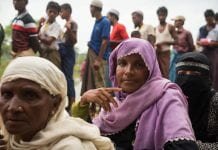
The World Health Organisation (WHO) has produced a framework for policymakers aimed at reducing violence against women and girls.
The WHO has partnered with the Office of the High Commissioner for Human Rights, the Dutch government, the Swedish International Development Cooperation Agency, UK Aid, the United States Agency for International Development and the World Bank Group; as well as the United Nations departments responsible for women, development, sexual and reproductive health, and drugs and crime to develop the seven-step RESPECT women framework.
WHO estimates show approximately 35% of women around the world have experienced some form of physical or sexual violence from an intimate partner or sexual violence from a non-partner. Intimate and sexual violence perpetrated against women, which has its roots in widespread systemic sexual inequality, is considered a public health crisis and a hindrance to sustainable international development.
Phumzile Mlambo-Ngcuka, Executive Director of UN Women, said: “To truly end violence against women and girls we need to dismantle the foundations of gender inequality and discrimination. That means attaining real and lasting equality between girls, boys, women and men in all areas of their lives. It also means sustaining the women’s rights movement that has long been at the forefront of action on gender equality. We also need to transform discriminatory attitudes, beliefs and social norms, and promote the human rights of all women and girls, with respect for diversity, gender equality and nonviolence.”
The RESPECT women framework functions as an acronym outlining the seven crucial steps of the WHO’s strategy to end violence against women and girls:
- Relationship skills strengthened – promoting initiatives which teach skills in conflict management and interpersonal communication;
- Empowerment of women – boosting women’s skills in self-sufficiency, assertiveness and confidence;
- Services ensured – strengthening and maintaining reliable, effective health, legislative, law enforcement and support services for women who need them;
- Poverty reduced – improving strategies aimed at addressing issues of poverty and household management, to better enable low income women to leave abusive partners;
- Environments made safe – including schools, public spaces and workplaces;
- Child and adolescent abuse prevented – by reducing rates of early years and adolescent abuse, it is hoped fewer girls and young women experience normalisation of abuse from a young age;
- Transformed attitudes, beliefs and norms – addressing damaging gender-based stereotypes, beliefs and norms.
Executive Director of the WHO’s Universal Health Coverage and Life Course Division Dr Peter Salama said: “It is important to note that the seven strategies should not be seen as silos. We need strategies to address multiple risk factors, so multicomponent interventions or synchronised strategies are more likely to reduce violence.”


















